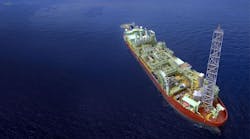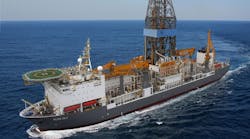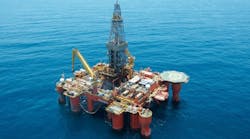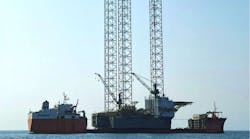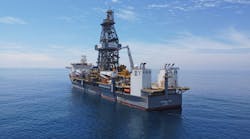To thrive in today’s economic environment, major oil and gas companies are embracing automated systems that can consistently accomplish drilling activities with higher speed, increased accuracy, and less human intervention. The automation of barrier management and managed pressure drilling (MPD) operations is a prime example of new technology solutions to meet such demands.
Moving toward remote operations
Operators worldwide are driven to find ways to reduce the cost and risks associated with drilling in order to maximize returns. This quest, combined with the effects of the global pandemic, has thrust “remote operations” into the forefront of the drilling services industry. Advances in digital technology, software tools, global connectivity, and improved data transfer rates allow us to effectively monitor operations through remote operations centers (ROCs), requiring fewer resources at the rig site. These ROCs shift reliance upon highly trained subject matter experts (SMEs) in the field to a small team of cross-disciplined SMEs working remotely to safely support several wells at a time.
This transition to remote operations depends heavily on the reliable automation of all drilling processes, and the automated response of the system to abnormal events in real time. Such systems will have to diagnose a compromised situation and respond accordingly to bring that situation back into an ideal or controlled state. This is particularly important when talking about remote MPD operations, because the MPD system becomes a critical part of the rig’s primary well control barriers. Ultimately, to truly have an automated MPD system capable of remote operations, it is going to require a robust and extremely dependable barrier management system.
Barrier management system
Barrier management is about understanding what barriers exist, what their critical controls are, and how their status is assessed and monitored in daily operations. Simply put, barrier management involves both risk management and mitigation. To safely manage and mitigate risk during live operations, the control system must be incorporated into a larger, integrated barrier management system that can do everything from identifying risk to monitoring, analyzing, and mitigating it.
MPD challenges and risks
The first challenge with any barrier management system occurs in the planning and design phase, when the barriers and their limits must be clearly identified. While barrier management is by no means a new concept to the industry, the classification of risk and identification of different barriers vary from company to company. For conventional drilling operations, these risks and barriers are well defined and generally well-regulated with documented industry best practices and minimum safety requirements.
A challenge with accurately defining the software and control barriers is that they both have a large variance in capability and functionality across the industry. To complicate things further, both rely on a combination of different components to make up their barriers. When combined, these individual components and variables create what is commonly called the “MPD primary barrier envelope.” The condition of each element contributes to the overall health of the primary barrier and well.
Monitoring risk
After the barrier envelope and all its elements have their limits clearly defined, they need to be monitored. In conventional operations, the primary well control barrier is monitored through simple, single-input limit or bandwidth alarms on the pit volume or flow out. Due to the dynamic nature of drilling operations, single-point alarms often result in repeated false alarms as operations change between different drilling states. These false alarms are compounded with an extensive list of variables that affect the volume and flow throughout operations. It’s these repeated false alarms that often lead to the rig personnel disabling them and ultimately missing the true influx and loss events.
With MPD and the addition of Coriolis flow meters, the accuracy and ability to quickly detect changes in flow and density has increased drastically. This has allowed MPD systems to become a critical tool in early event detection. However, if the enhanced flow and density data is only used in simple, single-variable alarms, the increased accuracy will only lead to more false alarms and, again, result in operators disabling the alarms. In this scenario, the MPD specialist or rig personnel is still required to manually monitor and understand when the quality of the primary barrier is deteriorating.
Advanced trends analysis and multiple variable alarms have helped reduce false alarms, but most of these also require manual user input and monitoring as drilling states or monitored values change. More advanced, signature-based detection algorithms and holistic barrier health monitoring systems are needed for true drilling automation—where event detection is done through monitoring the entire barrier envelope, and how the quality of all its individual barrier components influence the entire barrier’s overall health. Yet, these advanced algorithms are only going to be as accurate and reliable as the data they are monitoring. Therefore, any fully automated system must be able to understand and compensate when its monitored values or inputs deteriorate.
Analyzing risk
The next part of barrier management is to analyze the risk or health of the primary barrier. Using the hydraulic model as an example, as drilling progresses, user-configured variables, like pump efficiency, fluid properties, cuttings load, and most importantly fluid densities, can change. As those variables change, the accuracy of the model will drift; and this change in the model’s accuracy can be a very strong indicator of the health of the primary barrier or current level of risk to the well. Understanding that the barrier quality is degrading allows for further analyses and early diagnoses of potential well events before they become critical, such as:
- Influxes that result from trip gas, connection gas, or multiple pump-off events in wellbore
- Poor hole cleaning
- Fluid properties changes – thermal effects, evaporation, etc.
- Poor mud weight control
- Losses
- Pump efficiency
- Wash outs.
Mitigating risk
This final part of barrier management is where the MPD systems can really shine. With the ability to manipulate the pressures in the well, using SBP, automated MPD systems can actively maintain, and even improve, the barrier’s health as it weakens.
Returning to the hydraulic model example, as the drilling parameters drift, the quality of the barrier drifts; and if no correction is made to the model, the BHP will eventually exceed the operational window, resulting in losses or an influx. This is where an auto-calibrating MPD system will self-adjust and always ensure BHP control, even while inputs deteriorate. Or, looking at things that would traditionally damage the barrier’s health, like tripping as pipe is pulled from the hole, the bottomhole pressure is reduced because of the swab effect. Having an automated MPD system that can actively calculate and compensate for the pressure reduction keeps the barrier’s health in check. MPD systems can also take this a step further, with the ability to safely detect and circulate out small influxes while maintaining primary pressure barrier.
Conclusion
Ultimately, when talking about barrier management, MPD should be looked upon as a critical tool, especially with regards to rig automation and remote operations. The challenge is that it cannot just be an advanced early-kick-detection system, or an automated influx circulation system. To be truly automated, it needs to be able to:
- Clearly identify all barriers and the individual components that define them.
- Understand and define the limits of the entire system, its barriers, and each component.
- Monitor those barriers, both as single parameters and in a holistic view for complex events, such as influxes or losses.
- Identify missing or degraded barriers and automate the implementation of corrections.
- Proactively implement better controls and mitigations to minimize risks of events.

